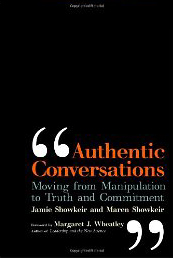Monday
Aug162010
AN ADMIRAL SAYS 'AYE, AYE' TO THE SAILORS
One of the best places to start to foster innovation is at the frontline — engaging the people who do the work about the ways they do the work. That sounds too simple to create transformation, but sometimes the simplest actions are the catalysts for powerful results.
A friend recently shared with us a great example of this in a Fast Company article about a Navy admiral, D. Michael Abrashoff. Working with his sailors, Abrashoff transformed his ship, the USS Benfold, from a hierarchical organization where underperforming sailors dreaded their time at sea into a ship with committed sailors and a reputation for being among the best in the Pacific fleet. He used three unconventional tools for the transformation:
His overarching philosophy when he took command of the Benfold was to shift the crew’s focus from being order takers who constantly looked upward for direction to an organization built on purpose and personal accountability. In the process, he saved the Navy hundreds of thousands of dollars, engendered the commitment and creativity of his crew, and enhanced his career — even though the latter result was something far from his intention.
One of the first things he did was schedule time to interview every member of the crew, making sure to ask: “What would you differently around here if you could?” Their answers not only created a better espirit de corps, it also improved the ship’s combat readiness. He also found out what their lives’ goals are and took steps to help his guys achieve them.
And his ultimate secret ingredient — make sure people were having fun. That’s not always easy to do on a ship that is on the seas for months at a time, but he made it a priority. For example, his supply officer found pumpkins in the Middle East so the crew could have a carving contest. He found an Elvis impersonator to put on a Christmas show.
By focusing on the people who do the work, the ship became one of the most innovative in the fleet. Any organization that is looking for ways to innovate should salute this guy.
A friend recently shared with us a great example of this in a Fast Company article about a Navy admiral, D. Michael Abrashoff. Working with his sailors, Abrashoff transformed his ship, the USS Benfold, from a hierarchical organization where underperforming sailors dreaded their time at sea into a ship with committed sailors and a reputation for being among the best in the Pacific fleet. He used three unconventional tools for the transformation:
- Dismantle hierarchy
- Constantly ask his crew “Is there a better way to do this?”
- Build fun into their work experience
His overarching philosophy when he took command of the Benfold was to shift the crew’s focus from being order takers who constantly looked upward for direction to an organization built on purpose and personal accountability. In the process, he saved the Navy hundreds of thousands of dollars, engendered the commitment and creativity of his crew, and enhanced his career — even though the latter result was something far from his intention.
One of the first things he did was schedule time to interview every member of the crew, making sure to ask: “What would you differently around here if you could?” Their answers not only created a better espirit de corps, it also improved the ship’s combat readiness. He also found out what their lives’ goals are and took steps to help his guys achieve them.
And his ultimate secret ingredient — make sure people were having fun. That’s not always easy to do on a ship that is on the seas for months at a time, but he made it a priority. For example, his supply officer found pumpkins in the Middle East so the crew could have a carving contest. He found an Elvis impersonator to put on a Christmas show.
By focusing on the people who do the work, the ship became one of the most innovative in the fleet. Any organization that is looking for ways to innovate should salute this guy.


 maren
maren